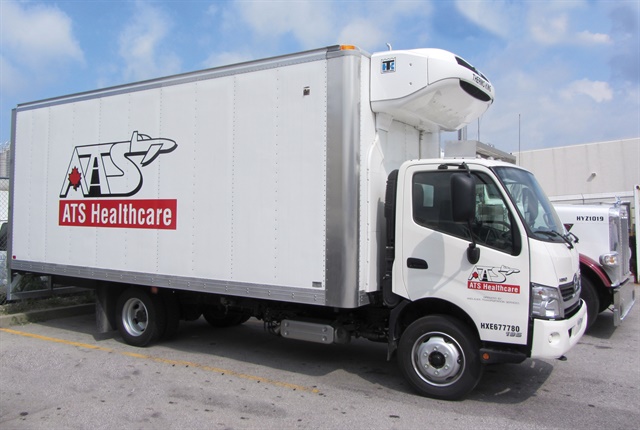
Safety programs have been a part of fleet culture since the advent of the automobile. It’s is a no-brainer, really. How can a business run smoothly when equipment is down and drivers run the risk of injury? However, like any form of training, methods of education and communication need to be regularly re-evaluated to ensure they’re meeting the desired objectives.
Business Fleet Magazine spoke with Mark Murrell, co-founder of CarriersEdge, an Ontario, Canada-based company that provides driver training solutions. Murrell offers his take on how fleet operators can reassess their safety training to better engage drivers to ultimately operate a safer fleet.
As an example of this, we also spoke with Ross Jessop, senior manager of risk, safety, and fleet for ATS Healthcare. Based in Toronto, ATS Healthcare sources pharmaceutical products from its suppliers, brings them to its terminals across Canada, and delivers them to its customers.
Commit from the Top
Before assessing their current safety program, fleet operators should take a step back and evaluate the commitment to safety from senior management. Unless the company’s safety culture is driven from the top on down, it’s tough to get drivers to buy into the program.
“The guys (at ATS) know the message is coming from the owner,” Jessop says. “He goes out in the trucks with the guys; it’s nothing for him to go out and sort freight. I’m not the only one preaching the message. Everybody’s singing the same song from the same book.”
Demonstrating management engagement reinforces the idea that safety is not only a driver issue, but also an entire company issue. “Safety is everybody’s business,” Murrell says. “If operations have their act together, managers are taking care of drivers, and maintenance people are doing a good job, safety can improve substantially as a result.”

Turning to program specifics, fleet operators should keep these tenets in mind: mix it up, recognize and incentivize, coach immediately, and involve your drivers.
Finally, proper documentation of both training and incidents is essential to demonstrate you’re following protocols in the event of an accident or litigation.
Mix It Up
When reassessing a fleet safety program look to add variety to keep drivers engaged, Murrell advises. Avoid the talking head in front of the classroom by using video, online interactive exercises, and driving simulators. Or exit the classroom altogether to conduct a lesson in the yard.
“If drivers are sitting in a classroom then they’re not out there driving, so make the most of that time,” Murrell says.
Other techniques include organizing drivers in groups and allowing them to put on their own presentations on a topic.
“If drivers collaborate and feel more a part of the business and an active part of the overall fleet, then they take a more engaged view toward safety,” he says. “They become more proactive on their own because they care more about the business.”
Upon initial driver onboarding, ATS operates a three-week program consisting of a mere three classroom sessions once per week. For the balance of the time, new hires are out in the trucks doing runs with a trainer.
“It’s tough to expect someone to sit in a classroom for several days of training,” Jessop admits. “You’re usually going to lose somebody after five or six hours. At that point, you’re just talking to the wall.”
Recognize Star Performers
Companies can manage driver performance by recognizing star performers through driver-of-the-month programs, but Murrell advises against basing the program solely on who’s the best driver or who has the fewest incidents.
Instead, focus on who provided the best customer service for the month or who had the best fuel efficiency. Recognizing and rewarding a variety of behaviors provides incentive for drivers to start consciously thinking about their performance, he says.
Fleets can also identify bad habits, such as following too closely, and put together an incentive program that rewards the better habits.
According to Murrell, smarter fleets are taking advantage of social media and recognizing their drivers online, which helps build the team and allows drivers to commend their peers.
At ATS, driver key performance indicators are measured and celebrated annually. Awards are presented during meetings so drivers are recognized in front of their peers. Jessop says there’s even a friendly competition for bragging rights between terminals regarding who is the safest based on the last accident, injury, or high-risk event.
Coach Immediately
ATS conducts spot audits on drivers to ensure they are following company protocol. For instance, if drivers are caught with an unlocked door, it will be brought up at one of the weekly meetings to refresh with everybody.
“We’re not waiting for an annual meeting to talk about this stuff,” Jessop says. “You’re able to nip it in the bud right away so that it’s still fresh in everybody’s head. If somebody injures themselves, we talk about what we need to do to fix the problem.”
In addition to the initial training, ATS conducts ride-alongs after 80 days. Drivers are monitored via telematics and GPS, so fleet managers can address certain behaviors such as speeding and hard braking and plan the most direct routes. Drivers are equipped with handheld devices so they can communicate with management through email, text message, or phone.
While use of technology to monitor safety has grown, successful fleets use it to resolve issues proactively, Murrell says.

When there is an incident, Murrell suggests using it as a learning opportunity across the whole fleet. Without placing blame, debrief it as a group to keep it fresh so it’s at the top of their minds.
Supplement that with a quick reference guide or checklist of everything drivers need to do in the event of an accident so they have quick access to it instead of having to remember everything.
Involve Drivers
Fleet operators should also foster engagement in safety education by asking drivers for their feedback. In many cases, drivers will come up with stricter solutions than management.
Murrell recounts a company that wanted to implement a speed-limit policy. After hearing the plan, the drivers wanted the policy to be stricter — so the company ended up lowering the speed limit even further, which increased safety and miles per gallon.
Murrell suggests that fleets come up with the types of data they want to track and share this information on a scorecard with their drivers to understand additional data to measure.
“This way, drivers are providing feedback on how they want to be measured and what they think is reasonable,” Murrell says. “As a result, drivers feel that they’re more engaged and are being listened to. Ask them what they think. You’re going to get simple ideas that are not that expensive to implement.”


0 Comments
See all comments